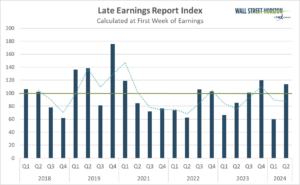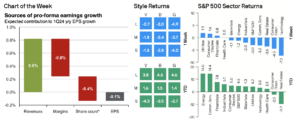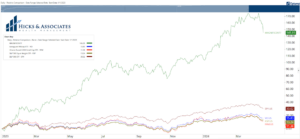We’ve all heard it. Financial media frequently refers to the CBOE Volatility Index (VIX) as the market’s “fear gauge.” While that is a convenient shorthand – certainly more digestible than its official definition as a measure of 30 day anticipated volatility (see below*) – VIX was never designed to measure the level of fear in the marketplace. Let me be clear: VIX is not now, nor has it ever been, an actual fear index.
That said, VIX has historically done a reasonably good job at reflecting sentiment throughout most of its existence. The index tends have an inverse relationship with the underlying S&P 500 Index (SPX). It tends to decline when SPX rises and rise when SPX falls. That is because there tends to be less demand for downside protection when markets are rising, and that demand has been the main linkage between SPX and VIX.
But that relationship, which was more a matter of convenience and correlation than construction, has broken down. We have recently seen unprecedented amounts of speculative call buying. Retail investors have come to appreciate that the nature of options creates a risk-controlled method for leveraged speculation. In a rising market, speculation is frequently rewarded, so it is understandable why traders will gravitate towards a product that can offer high returns with a defined risk.
The problem for the markets, and hence VIX, is that those options need to be hedged by someone. Call sellers tend to be professionals, who are quick to raise prices via higher implied volatilities and will hedge their overall exposure with options on related products. That raises the level of implied volatility throughout the system, which is reflected in higher VIX.
It is more appropriate to think of VIX as reflecting the supply/demand dynamic for volatility protection throughout the options marketplace. With demand outstripping supply, whether for calls instead of puts, it is not unreasonable to see VIX at relatively elevated levels.
Last week saw a rare occurrence. All four major indices – SPX, the Dow Jones Industrials (DJIA), the Nasdaq Composite (COMP), and Russell 2000 (RTY) closed simultaneously at record highs. The last time that happened was January 2018. Options traders remember that February 2018 was the so-called “Volmaggedon”, when markets plunged and volatility measures like VIX exploded higher. The setup is different this time though (always a dangerous market phrase). In 2018, VIX was flirting with single digits, and I needed to persuade people that shorting VIX at such low levels was a one-tailed trade. You might make a point or two from selling, but risked 10 or more if you were wrong. And many were. Now we see VIX above 20. Yet there is still little demand for put protection, as evidenced by the extraordinarily low put/call ratio. The call buyers are in control this time, and that is flipping the normal VIX relationship on its head.
*From the CBOE website: The VIX Index is a financial benchmark designed to be an up-to-the-minute market estimate of expected volatility of the S&P 500 Index, and is calculated by using the midpoint of real-time S&P 500® Index (SPX) option bid/ask quotes. More specifically, the VIX Index is intended to provide an instantaneous measure of how much the market thinks the S&P 500 Index will fluctuate in the 30 days from the time of each tick of the VIX Index.
Disclosure: Interactive Brokers
The analysis in this material is provided for information only and is not and should not be construed as an offer to sell or the solicitation of an offer to buy any security. To the extent that this material discusses general market activity, industry or sector trends or other broad-based economic or political conditions, it should not be construed as research or investment advice. To the extent that it includes references to specific securities, commodities, currencies, or other instruments, those references do not constitute a recommendation by IBKR to buy, sell or hold such investments. This material does not and is not intended to take into account the particular financial conditions, investment objectives or requirements of individual customers. Before acting on this material, you should consider whether it is suitable for your particular circumstances and, as necessary, seek professional advice.
The views and opinions expressed herein are those of the author and do not necessarily reflect the views of Interactive Brokers, its affiliates, or its employees.
Disclosure: Options Trading
Options involve risk and are not suitable for all investors. Multiple leg strategies, including spreads, will incur multiple commission charges. For more information read the "Characteristics and Risks of Standardized Options" also known as the options disclosure document (ODD) or visit ibkr.com/occ




























